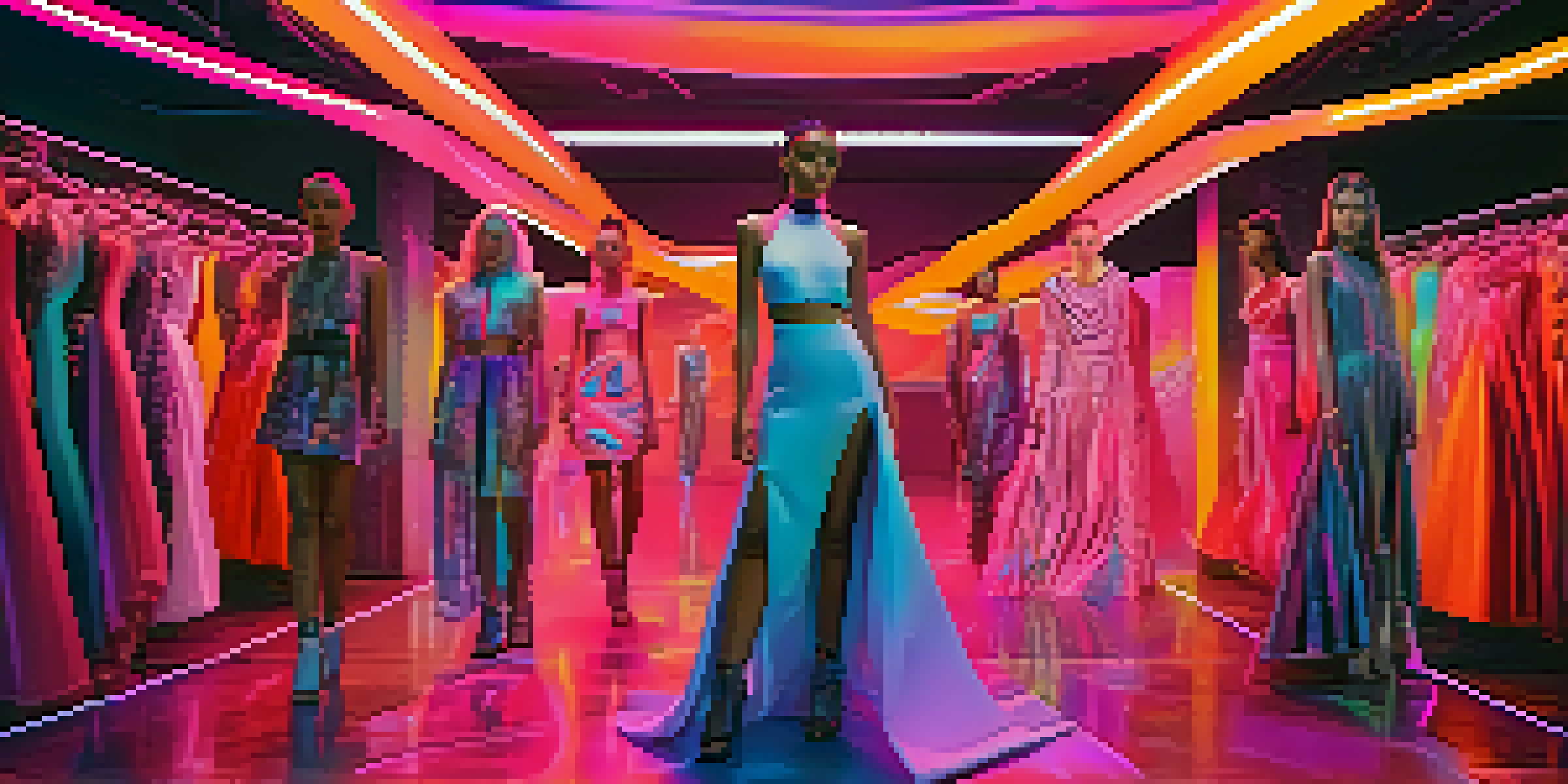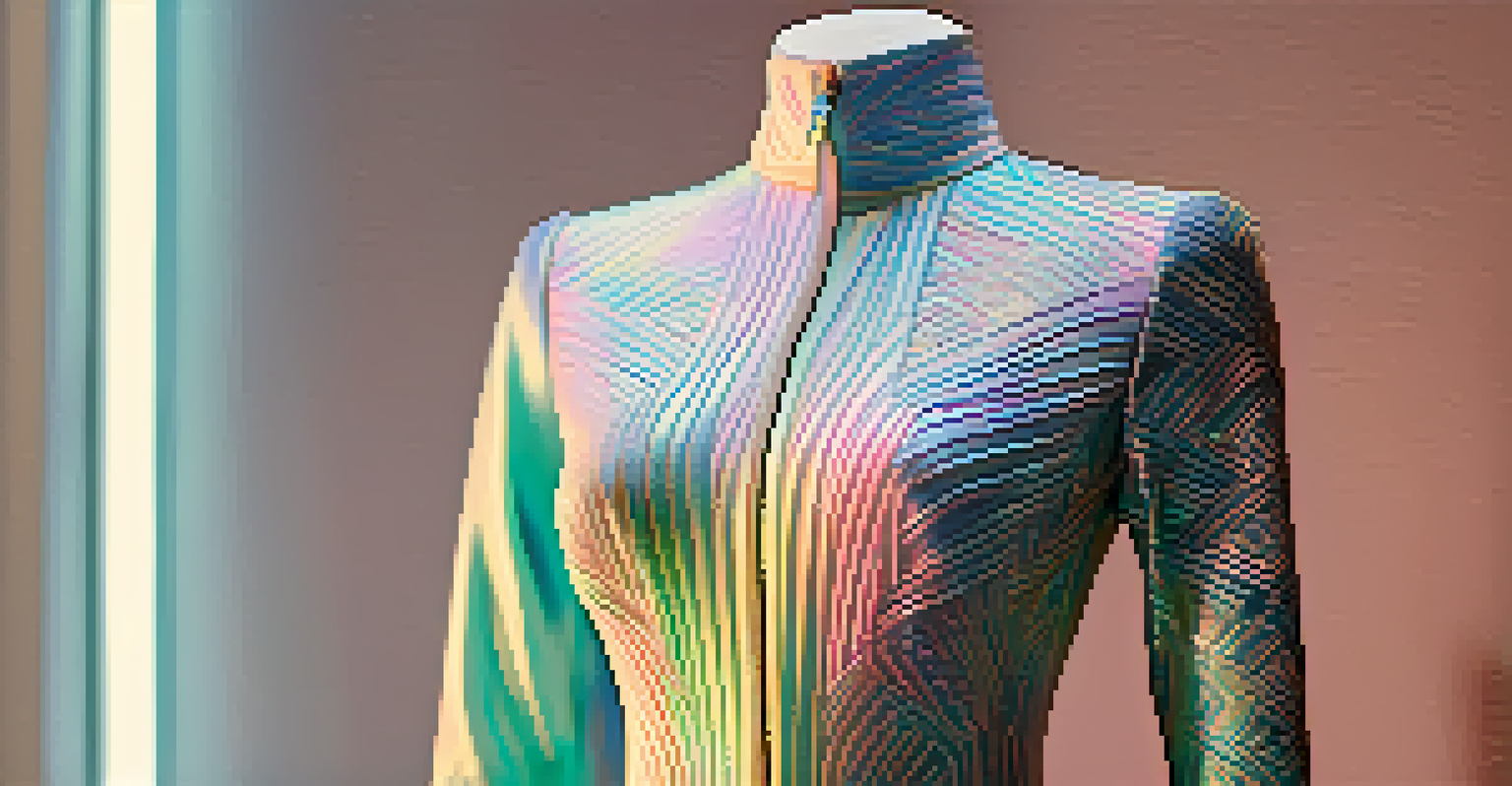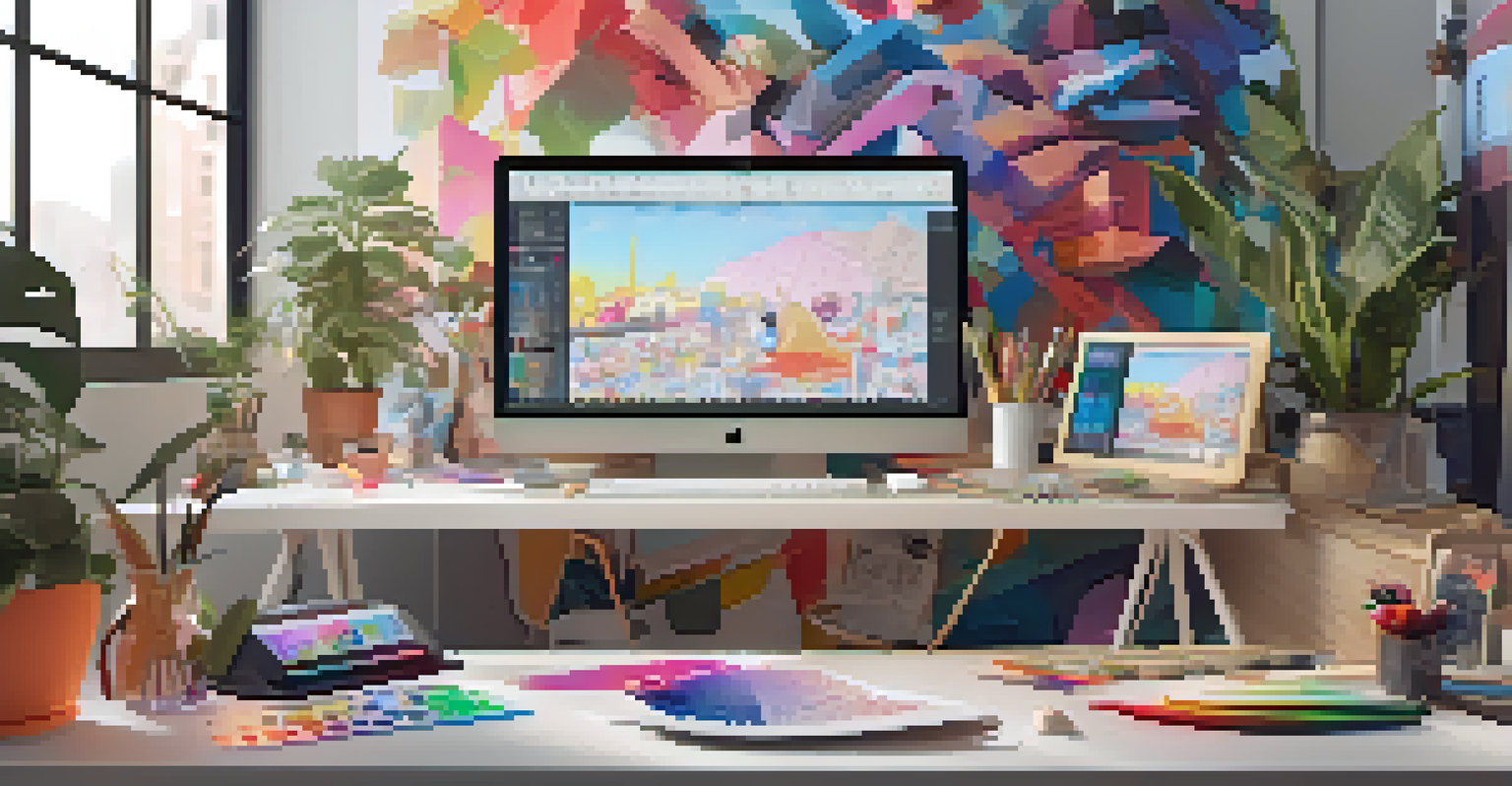Creating Unique Virtual Clothing: NFTs in Digital Fashion

Understanding NFTs and Their Role in Digital Fashion
NFTs, or non-fungible tokens, are unique digital assets that represent ownership of a specific item or piece of content. In the realm of fashion, NFTs allow designers to create digital clothing that can be owned and traded just like physical garments. This innovation transforms the way we think about fashion, making it possible for consumers to express their style in virtual environments.
Fashion is the armor to survive the reality of everyday life.
Imagine owning a one-of-a-kind dress that only exists online, created by your favorite designer. With NFTs, this dream becomes a reality, as each digital garment is linked to a blockchain, ensuring authenticity and scarcity. This means that even in the vast world of digital fashion, your virtual wardrobe can be as unique as you are.
As the lines between physical and digital worlds continue to blur, understanding NFTs is crucial for anyone interested in the future of fashion. They not only empower designers but also provide consumers with a new way to engage with brands and showcase their individuality in virtual spaces.
The Intersection of Technology and Creativity in Fashion
The digital fashion landscape is a playground for creative minds and tech enthusiasts alike. By leveraging advanced technologies like 3D modeling and augmented reality, designers can push the boundaries of traditional fashion design. This fusion of creativity and technology results in innovative clothing that can be worn in virtual worlds, gaming environments, or even on social media.

For example, a designer might create a stunning virtual outfit that can only be showcased in a popular online game. Players can purchase this exclusive item as an NFT, making it a status symbol within the game's community. This not only adds a new revenue stream for designers but also enhances the gaming experience for players who want to express their unique style.
NFTs Revolutionize Digital Fashion
Non-fungible tokens (NFTs) enable designers to create unique digital clothing, offering consumers a new way to express their individuality in virtual spaces.
As technology continues to evolve, the possibilities for digital fashion are limitless. The blend of art and technology allows for new forms of expression, encouraging designers to experiment and explore unconventional ideas that would be difficult to realize in the physical world.
Benefits of Virtual Clothing for Designers and Brands
Creating virtual clothing as NFTs offers numerous advantages for designers and brands. One significant benefit is the reduced cost associated with traditional fashion production, which often involves materials, labor, and shipping expenses. With digital fashion, designers can create stunning pieces without the overhead, allowing for more creativity and experimentation.
The future belongs to those who believe in the beauty of their dreams.
Additionally, virtual clothing can reach a global audience without the limitations of physical distribution. A designer in Paris can sell their NFT garments to customers in Tokyo, opening up new markets and opportunities. This accessibility expands brand visibility and allows for diverse customer engagement across different cultures and demographics.
Moreover, NFT fashion provides an avenue for ongoing revenue through resale royalties. When a digital garment is sold on the secondary market, designers can earn a percentage of the sale, creating a sustainable income model that traditional fashion often lacks.
Consumer Demand for Unique and Personalized Fashion
Today's consumers are increasingly seeking unique and personalized items that reflect their individuality. Digital fashion meets this demand by allowing users to purchase one-of-a-kind virtual clothing items that cannot be replicated. This appeal for exclusivity drives the popularity of NFTs, as buyers want to stand out in both real and virtual environments.
Imagine attending a virtual event wearing a bespoke outfit that no one else has. This sense of uniqueness enhances social interactions and makes virtual experiences more enjoyable. As people spend more time in digital spaces, the desire for distinctive fashion will only grow.
Benefits for Designers and Brands
Virtual clothing as NFTs reduces production costs and expands market reach, allowing designers to earn ongoing revenue through resale royalties.
Furthermore, the ability to customize digital clothing adds another layer of personalization. Many brands offer options for consumers to tweak designs, colors, and styles, allowing for a more tailored virtual wardrobe that truly represents their personal tastes.
Challenges Facing the Digital Fashion Industry
Despite the exciting potential of digital fashion, there are challenges that need to be addressed. One major concern is the environmental impact of blockchain technology, which is often criticized for its high energy consumption. As the fashion industry becomes more eco-conscious, finding sustainable solutions for NFTs will be essential to align with consumer values.
Additionally, as more designers enter the digital fashion space, the market may become oversaturated. Standing out in a crowded field can be difficult, and designers must continually innovate to capture consumer attention. This means not only creating unique designs but also engaging with audiences in meaningful ways across various platforms.
Lastly, there is a learning curve for both consumers and designers when it comes to understanding NFTs and how to navigate the digital marketplace. Education and accessibility will play vital roles in ensuring the growth and success of digital fashion in the long run.
The Future of Fashion: Blending Reality and Virtuality
As we look to the future, the integration of virtual clothing into our everyday lives seems inevitable. With the rise of the metaverse—virtual spaces where people can socialize, work, and play—digital fashion will become increasingly relevant. Imagine attending a virtual concert where everyone showcases their unique NFT outfits, creating a vibrant and diverse tapestry of digital expression.
Moreover, collaborations between traditional fashion houses and digital artists are already beginning to emerge. These partnerships bridge the gap between physical and virtual fashion, allowing brands to tap into the growing interest in NFTs. By embracing this digital revolution, traditional designers can remain relevant in an ever-evolving industry.
Consumer Demand for Uniqueness
Today's consumers crave personalized and exclusive digital fashion items that enhance their online presence and social interactions.
Ultimately, the future of fashion lies in its ability to adapt and innovate. By incorporating digital elements and NFTs into their offerings, brands can create a more inclusive, diverse, and sustainable fashion landscape that resonates with consumers in both the physical and virtual worlds.
Getting Started with NFTs in Digital Fashion
If you're a designer looking to dip your toes into the world of NFTs, the first step is to understand the technology behind them. Familiarize yourself with blockchain platforms like Ethereum, which host the majority of NFTs. There are also user-friendly marketplaces like OpenSea and Rarible that make it easy to mint and sell your digital fashion creations.
Next, think about how you want to present your designs. High-quality visuals and engaging storytelling are crucial for attracting potential buyers. Consider showcasing your digital clothing in virtual fashion shows or collaborations with influencers who can help elevate your brand's visibility.

Finally, engage with your audience on social media and other platforms to build a community around your digital fashion. Sharing behind-the-scenes content, design processes, and interactive experiences can create excitement and anticipation for your NFT releases, fostering a loyal customer base eager to support your work.